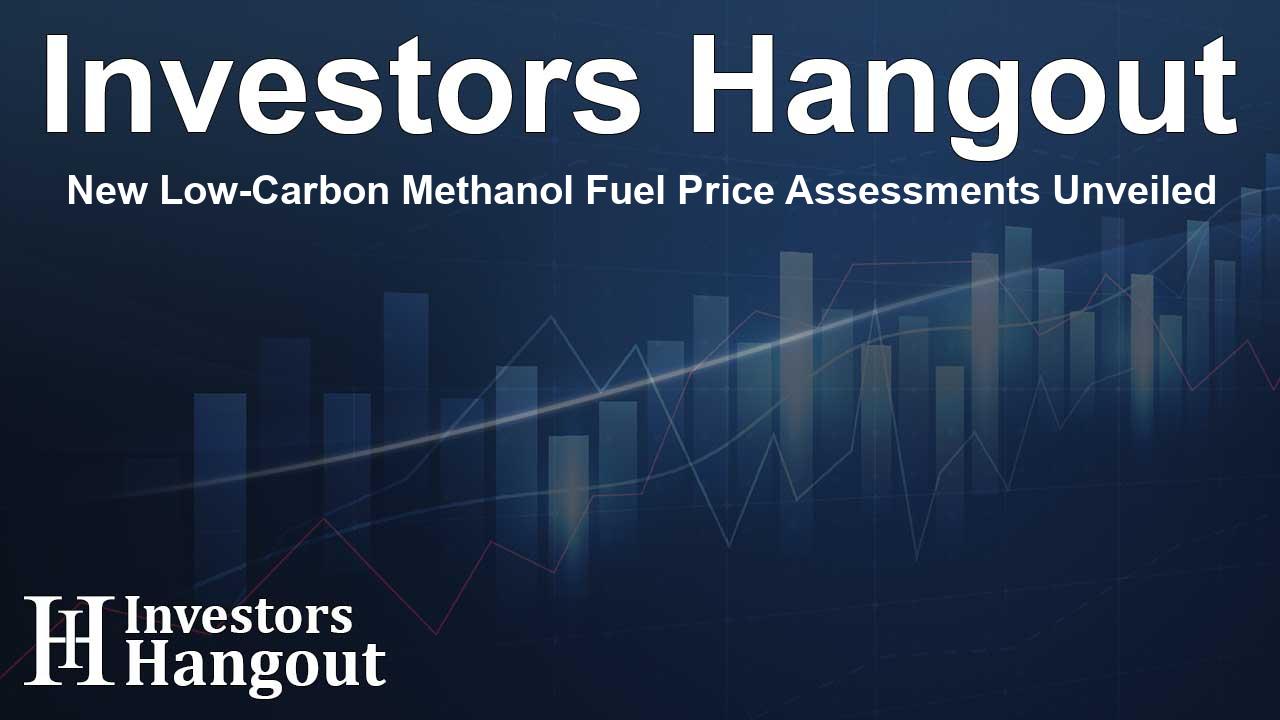New Low-Carbon Methanol Fuel Price Assessments Unveiled

S&P Global Unveils Low-Carbon Methanol Marine Fuel Price Assessments
S&P Global Commodity Insights has recently launched new price assessments for low-carbon methanol marine fuel, specifically for the ports of Shanghai and Rotterdam. These innovative assessments are designed to provide essential price transparency, supporting shipowners and stakeholders in the push toward a more sustainable maritime industry.
Highlighting Market Advancements
Esther Ng, the Global Methanol Pricing Lead at S&P Global Commodity Insights, expressed excitement about the introduction of the low-carbon methanol marine fuel assessments for Shanghai. Recognized as the world's busiest container port, Shanghai is pivotal in the growth of sustainable methanol, which has already been supplied and bunkered there. These assessments are beneficial as they provide vital price points for shipowners navigating the shift towards net-zero emissions by the year 2050.
Global Trends and Regulatory Changes
Olivier Maronneaud, Global Research Lead for Methanol and Plastic Circularity, highlighted the recent legislative support for low-carbon bunker fuel in Europe. This encouraging environment, coupled with the outcomes from recent International Maritime Organization (IMO) meetings, sets a foundation for increasing liquidity in low-carbon methanol as bunker fuel. As the maritime industry faces impending regulations, including penalties on greenhouse gas emissions commencing from 2028, it is essential for stakeholders to stay informed on market dynamics.
Shanghai and Rotterdam: Emerging Trading Hubs
According to analytics from S&P Global, Shanghai is projected to reach a capacity of 200,000 metric tons per year for biomethanol and eMethanol by 2025, with expectations to grow to 1.5 million metric tons by 2028. This growth is complemented by the anticipation of the first Chinese molecules for spot trading becoming available by mid-2025, further solidifying Shanghai's role as a significant low-carbon methanol trading hub.
Importance of Assessments to the Industry
The recently launched assessments also include Rotterdam, Europe’s largest port and bunker hub. The Port of Rotterdam has initiated the Green and Digital Shipping Corridor, aiming to cut emissions by at least 20% on the lengthy route to Singapore by the year 2030. Under the FuelEU Maritime regulations scheduled from 2025 to 2029, the shipping sector faces escalating greenhouse gas intensity savings, necessitating adaptive strategies for compliance.
Key Price Assessment Details
The assessments released by Platts for low-carbon methanol marine fuel include:
- Platts Low-carbon methanol FOB Shanghai
- Platts Low-carbon methanol marine fuel Delivered Shanghai
- Platts Low-carbon methanol marine fuel Delivered Rotterdam ($/mt)
- Platts Low-carbon methanol marine fuel Delivered Rotterdam (Euro/mt)
These assessments reflect accurate market pricing for products combined with sustainability certifications demonstrating reduced carbon intensity compared to traditional fossil fuels.
About S&P Global Commodity Insights
S&P Global Commodity Insights has over four decades of expertise in the chemicals market, offering a wide range of price assessments across various sectors—including alternative marine fuels like LNG, ammonia, and bio-bunkers. Their comprehensive insights support market participants in navigating complex commodity landscapes.
Media Contacts
For more information, please contact the media representatives of S&P Global Commodity Insights for assistance.
Frequently Asked Questions
What are the new price assessments introduced by S&P Global?
The new assessments for low-carbon methanol marine fuel for Shanghai and Rotterdam aim to enhance pricing transparency in the maritime industry.
Why is low-carbon methanol significant for shipping?
Low-carbon methanol represents a vital alternative fuel as the shipping industry aims for sustainability and compliance with emerging environmental regulations.
When are the first molecules for spot trading expected?
They are anticipated to become available by mid-2025, establishing Shanghai as a pivotal trading hub.
What is the expected growth in low-carbon methanol production in China?
China is projected to ramp up its biomethanol and eMethanol capacity from 200,000 mt/year in 2025 to 1.5 million mt/year by 2028.
How will the new regulations affect the shipping industry's costs?
The regulations are set to increase costs related to transporting goods, which will require adaptation from market players to stay competitive and compliant.
About The Author
Contact Riley Hayes privately here. Or send an email with ATTN: Riley Hayes as the subject to contact@investorshangout.com.
About Investors Hangout
Investors Hangout is a leading online stock forum for financial discussion and learning, offering a wide range of free tools and resources. It draws in traders of all levels, who exchange market knowledge, investigate trading tactics, and keep an eye on industry developments in real time. Featuring financial articles, stock message boards, quotes, charts, company profiles, and live news updates. Through cooperative learning and a wealth of informational resources, it helps users from novices creating their first portfolios to experts honing their techniques. Join Investors Hangout today: https://investorshangout.com/
The content of this article is based on factual, publicly available information and does not represent legal, financial, or investment advice. Investors Hangout does not offer financial advice, and the author is not a licensed financial advisor. Consult a qualified advisor before making any financial or investment decisions based on this article. This article should not be considered advice to purchase, sell, or hold any securities or other investments. If any of the material provided here is inaccurate, please contact us for corrections.
